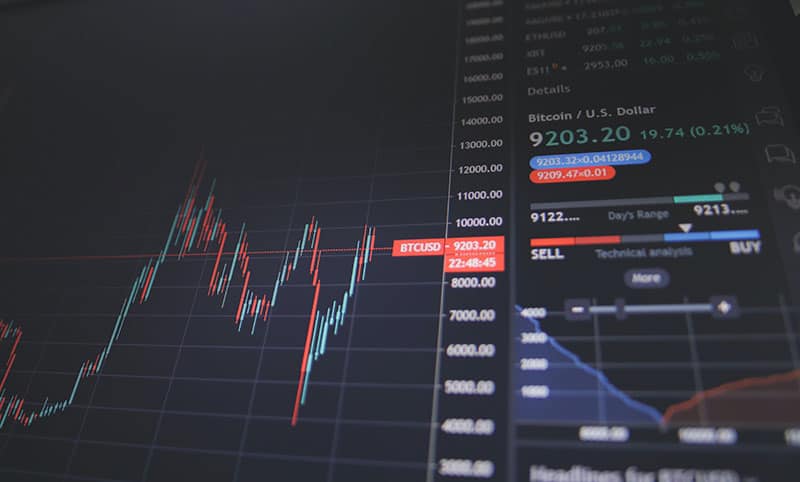
In the age of COVID, B.C. finance professor Hany Fahmy’s addition to a popular tool for portfolio construction could help investors make smarter choices during a meltdown
For students of financial crashes, it was yet another Black Monday. On March 9, partly thanks to fears about the COVID-19 pandemic, global stock markets suffered their worst one-day rout since 2008. Before things began to recover late in the month, the S&P 500 Index had plunged almost 30 percent from its record high in February.
After a major event like COVID, investors have to ask themselves a tough question, Hany Fahmy notes: “How long should I wait until I revise or rebalance or even exit the portfolio?”
The B.C. finance professor watched as everyone bolted for the exits, a common feature of stock market collapses, which occur with alarming frequency. Then he developed a theory that could help investors avoid following the herd—and yield insights into how markets might behave after a shock.
As Fahmy points out, this idea is an extension of work by U.S. academic Harry Markowitz, who shared the 1990 Nobel Memorial Prize in Economic Sciences for his theory of portfolio choice.
Fahmy, associate professor and intellectual finance lead in the faculty of management at Royal Roads University, explains that the portfolio construction model pioneered by Markowitz aims to find the best asset allocation. If you have, say, $100,000 to invest, what proportion should you put into stocks, bonds, cash and other asset classes?
Markowitz’s theory calls for mean-variance optimization, whereby investors try to make the maximum average, or mean (M), return on the portfolio with the least possible risk, or variance (V). In a recent paper for the Journal of Economics and Business, Fahmy adds time (T) to the mix to get MVT.
“Once you start trading, lots of stuff will happen in the market,” he says, citing news, uncertainty and investor overreaction. “Those things will prompt investors to change their position.” With that in mind, Fahmy extended Markowitz’s model to account for what he calls the post-trading duration problem.
A matter of time
Asked how he came up with his idea, Fahmy says he was always skeptical about choice theory in economics because it completely ignores time, failing to consider the experience or activity involved. “It’s about consumption of goods, and that’s it.”
Like sleeping or watching a play, portfolio construction is an activity, Fahmy says. It combines physical goods—in this case, stocks, bonds and so on—with duration. “The neat thing about my extension is that it will give you an equation where time appears explicitly as a function of different sources of uncertainty.”
In academic literature, there are portfolio construction models that take time into account, Fahmy says. But they’re complex as well as dynamic, in the sense that time is implicit. “You don’t have a simple, elegant equation that has time as a function of different types of uncertainties.”
Fahmy compares his equation to the capital asset pricing model (CAPM), which investment practitioners like because of its simplicity. “It’s a very simple, linear equation,” he says of his own work. “And it can be written easily, and it can be used to give you optimum duration.”
Three kinds of uncertainty
Following a market disruption, the ideal time to wait before rebalancing will hinge on three kinds of uncertainty, Fahmy adds. “One, the investor’s degree of overreaction, whether the investor is rational or irrational. No. 2, a measure of intensity of shocks or financial news, and No. 3, the investor’s strategy. Are you a short-term investor or a long-term investor?”
Irrational investors overreact to bad news—which gets amplified by social media—and decide to exit, Fahmy observes. “But what about rational investors?” he asks. “What about those trained fund managers? Why were rational and irrational investors all behaving in the same way? My extension explained that.”
Fahmy’s recommendation: “For rational investors after the realization of financial shock, long-term duration strategies are more rewarding than short-term strategies,” he says. “Instead of overreacting to financial news immediately, if you waited a few weeks rather than exiting the markets, you would be better off.”
A positive shock
Since publishing his paper, Fahmy has looked at extending it to longer time frames—by asking how often investors tend to revise their portfolio over a whole year, for example.
He’s also used the duration model to show how the 2016 Paris Agreement on climate change would have affected a green portfolio consisting of low-carbon stocks versus a pollution-spewing counterpart. “You will see that two weeks after the shock, the green portfolio performed way better than the polluting portfolio,” he says. “And why is that? Again, because of the overreaction of investors. In this case, it’s a positive shock in terms of constructing green, or ethical, portfolios.”
Another potential application for Fahmy’s work: gauging how markets might respond to a second wave of COVID. Will we see another big selloff, or will things be different?
“Fund managers, regulators, policy makers or even investors can use this in order to figure out what will happen, or at least get an idea about how the market will react after a shock,” Fahmy says. Those results may not be precise, he admits. “But at very least you can determine a worst-case scenario and a best-case scenario, and then model your risk accordingly.”






